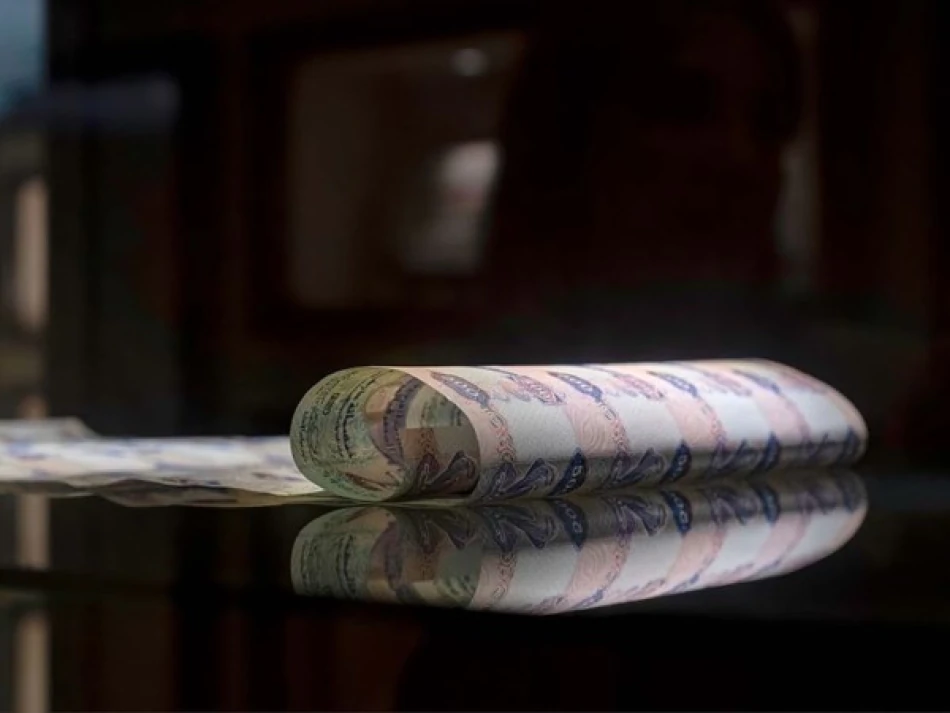
Islamic Treasury Sukuk Auction in July Attracts Bids Worth AED 5.35 Billion
UAE's Islamic Treasury Bonds Draw Record Demand as Gulf States Double Down on Sharia Finance
The UAE Ministry of Finance has successfully raised 1.1 billion dirhams ($300 million) through its July Islamic treasury sukuk auction, with investor demand reaching nearly five times the offered amount. This overwhelming response signals growing confidence in the Emirates' Islamic finance sector and reflects the Gulf state's strategic push to establish itself as a global hub for Sharia-compliant financial instruments.
Auction Details Reveal Strong Market Appetite
The auction, conducted in partnership with the UAE Central Bank, attracted bids totaling 5.35 billion dirhams across two tranches maturing in August 2028 and May 2030. The oversubscription rate of approximately 500% demonstrates robust institutional appetite for dirham-denominated Islamic bonds, particularly from the eight primary dealer banks participating in the program.
The Ministry achieved competitive pricing with yields of 3.88% for the 2028 tranche and 3.95% for the 2030 tranche—rates that closely mirror comparable US Treasury yields at the time of issuance. This pricing alignment suggests UAE sovereign Islamic debt now trades at similar risk premiums to American government bonds, a significant achievement for the regional market.
Strategic Implications for UAE's Financial Markets
Building a Dirham Yield Curve
The success of these local currency sukuk serves a critical infrastructure purpose: establishing a reliable yield curve denominated in UAE dirhams. This benchmark is essential for pricing other dirham-denominated debt instruments and provides domestic investors with alternatives to dollar-based investments, reducing currency risk exposure.
Competing with Regional Financial Centers
The UAE's Islamic finance push comes as Gulf states increasingly compete for financial services dominance. Saudi Arabia has been aggressively building its capital markets through the Saudi Vision 2030 program, while Qatar and Kuwait have also expanded their sukuk programs. The UAE's focus on local currency instruments differentiates its approach and could attract investors seeking dirham exposure as the economy diversifies away from oil dependency.
Market and Investor Perspective
For institutional investors, these sukuk offerings provide several advantages. The Sharia-compliant structure appeals to Islamic banks and funds that must adhere to religious investment guidelines, while the government backing offers security comparable to conventional sovereign bonds. The local currency denomination also serves UAE-based institutions looking to match their dirham liabilities with appropriate assets.
The strong demand likely reflects broader trends in Islamic finance, which has grown significantly over the past decade as both religious and secular investors recognize sukuk as viable alternatives to conventional bonds. Global Islamic finance assets are estimated to exceed $3 trillion, with sukuk representing a substantial and growing segment.
Economic Context and Future Outlook
This successful auction occurs against a backdrop of the UAE's continued economic diversification efforts. As the country reduces its reliance on oil revenues, developing robust local capital markets becomes increasingly important for financing government operations and infrastructure projects.
The competitive yields achieved suggest international confidence in UAE's fiscal management and economic prospects. With the country hosting COP28 and positioning itself as a leader in sustainable finance, future sukuk issuances may increasingly incorporate environmental, social, and governance (ESG) elements—a trend already emerging in Malaysia and Indonesia's Islamic bond markets.
The Ministry's 2025 Islamic treasury sukuk program appears well-positioned to continue attracting strong investor interest, particularly if regional geopolitical stability persists and the UAE maintains its reputation for sound fiscal management. Success in building liquid local currency debt markets could eventually support the UAE's broader ambitions to establish the dirham as a more prominent regional currency for trade and investment.
 Layla Al Mansoori
Layla Al Mansoori







